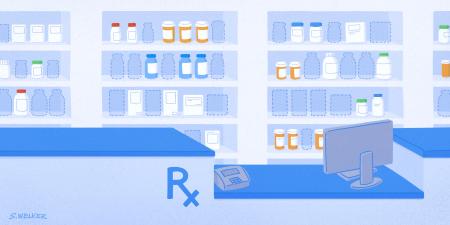Abstract
When any drug is in short supply, it must be rationed. Recent increases in the frequency of shortages require more rationing by clinicians. Most health systems have policies on managing drug shortages, but transparency of criteria according to which specific scarce medications should be rationed—and by whom—are rare. The COVID-19 pandemic offered several examples of clinical and ethical need to develop and implement clear, fair strategies for distributing medications in short supply. Lessons from the pandemic should inform strategies for managing drug shortages now and in the future.
Shortages Require Rationing
At the time of this writing, the US Food and Drug Administration (FDA) listed 136 medications in shortage, ranging from inhaled albuterol solution to injectable vecuronium.1 Even before the pandemic, it was not uncommon to see over a 100 drugs in shortage at any given time, but in recent years the state of drug shortages has become even more severe. Data from the University of Utah and the American Society of Health-System Pharmacists (ASHP) note that the number of ongoing and active shortages in mid-2023 is at a 10-year high.2,3 Products in short supply today include several standard-of-care chemotherapy agents, critical care medications such as intravenous hydrocortisone, important medications for attention-deficit disorder, and even common medications for diabetes.2 The most common reasons for drug shortages are quality deficits during manufacturing, as well as economic disincentives to produce low-cost but difficult-to-manufacture products.4 A comprehensive framework to improve the resilience of the medical product supply chain is available from the National Academies of Sciences, Engineering, and Medicine.5 But what should organizations do today, assuming shortages will continue to arise and could even become more common and severe?
Most drug shortages are identified by a pharmacy department when an expected order does not arrive. The pharmacy team acts quickly to determine how long the stock on hand may last and what alternatives can be purchased. The ASHP Guidelines on Managing Drug Product Shortages provide comprehensive recommendations and best practices for managing shortages to mitigate patient harm.6 However, these guidelines cannot help organizations change the fact that when any drug is in short supply, it must be rationed. Some patients will receive it, while others who would otherwise have received it—and potentially derived meaningful benefit from it—will not be able to get it. The cumulative health impacts of all recent or current drug shortages would be challenging to calculate, but in view of how frequently many medications in shortage are used and how effective some of them are in treating common conditions, it is fair to presume that the adverse health effects of having so many drugs in short supply is quite significant. Shortages can also cause patients and caregivers to worry about whether or not they will be able to receive treatment, adding to their stress about their illness.
Who Decides?
Most health systems in the United States have some kind of general policy on how drug shortages are supposed to be managed, but detailed clinical guidance on how to allocate specific scarce medications is often unavailable. Professional societies7 or federal agencies, such as the Centers for Disease Control and Prevention,8 sometimes will provide recommendations on how to prioritize patients when a shortage appears likely to last a long time, but this guidance is rarely available at the start of a shortage when initial allocation strategies must be developed and implemented.
This lack of guidance is visible within health systems, where pharmacists are generally at the center of shortage planning but may not directly involve prescribers or others impacted when developing initial rationing strategies. A 2018 survey of 719 health system pharmacists found that all had experienced drug shortages in the last year, with most (69.2%) reporting more than 50 shortages. Some respondents (36%) reported that their hospital had a standing committee to address shortages, but only 13.3% had a committee that included any physicians, and 2.8% had a committee that included an ethicist.9 Most respondents (92.4%) reported that they typically had less than a month to prepare for an expected shortage, and 81.3% reported that “hoarding” was part of their strategy for addressing incipient shortages. While only about a third of respondents (34.4%) admitted to carrying out overt rationing in the past year, of these, more than half (51.8%) reported that decisions about who would and would not receive the medication were left to treatment teams alone, with no specific guidance, and the remainder (48.2%) reported that committees provided guidance. However, most affected patients (64%) were not informed that their care plans had been altered due to a shortage that required rationing. In short, “who decides” which patients will receive medications that are in short supply varies widely and is rarely guided by careful, transparent, and inclusive deliberation.
Not only are physicians rarely involved in developing specific rationing strategies; many prescribers are unaware when shortages exist. Outside of widely reported shortages during the pandemic, such as vaccine shortages in early 2021, inpatient prescribers often become aware that a specific drug is in shortage only when they receive an alert in the electronic health record. In outpatient settings, prescribers may only learn a product is in shortage when a pharmacist notifies them that a prescription they wrote cannot be filled. In some cases, the prescriber might never hear about a shortage affecting their patient if the pharmacist doesn’t call and the patient decides not to fill the prescription rather than calling multiple pharmacies to find one with available supply.
Given the disparate and often disconnected ways in which rationing decisions are made, it is not surprising that strategies for addressing severe shortages differ in meaningful ways.
In addition, outside of the COVID-19 pandemic, it has been uncommon for health systems to coordinate with each other to better address drug shortages across a state or region. Typically, each system makes its own decisions based on the level of shortage at its own facilities. In fact, in the survey discussed above, 55.4% of pharmacists reported that one of the ways their system coped with shortages was by stopping any sharing of drugs in shortage with other sites.9 The result is that a drug can be in severe shortage in some organizations but in much better supply in others, often worsening disparities.10 Recent survey data from the American Society of Health-System Pharmacists demonstrate these differences: of 1123 respondents to a mid-2023 survey of health system pharmacists, 32% said current shortages were severe enough to require “rationing, delaying, or canceling treatments or procedures,” while 63% reported shortages but sufficient supplies to not require rationing.11 Notably, health systems with better supplies cannot easily share due to provisions in the Federal Drug Supply Chain Security Act that make sending product for more than one patient in emergent need challenging and onerous.12
Different Decisions
Given the disparate and often disconnected ways in which rationing decisions are made, it is not surprising that strategies for addressing severe shortages differ in meaningful ways. For example, in the face of a coming shortage, one organization might choose to use its available product as usual until it is gone, while another might stop using it for some indications or groups of patients, seeking to reserve a supply for future patients who might be more likely to benefit. Some might choose to treat only “their” patients and not accept transfers who need access to the treatment in shortage, and some might plan on being able to transfer patients to other systems if they run out of the medication.
Survey data from the early days of remdesivir availability during the SARS-CoV-2 pandemic— when the FDA’s authorization of its emergency use created demand for the drug that was much larger than the available supply—demonstrated this variability in strategies for addressing drug shortages, even as the data also illustrated that most responding organizations took this particular allocation dilemma very seriously.13 Virtually all responding hospitals (98%) had formed committees to develop criteria for remdesivir allocation, and 94% of those that had done so included adult infectious disease physicians and 35% included ethicists. Yet, even with this level of expertise at the table, hospitals made different rationing decisions. For example, some used a “first come, first served” approach (47%), others used random lottery (22.7%), and a few used comorbidities (4.5%) or essential worker status (4.5%).
Equitable Access
Underlying any ethical rationing strategy is the notion of justice or fairness, although rationing strategies implicitly or explicitly also typically speak to a variety of related values, such as respect for persons, nonmaleficence, community engagement, and equity. For example, in 2012, Rosoff14 outlined an ethical framework for short-term rationing during drug shortages based on earlier work by Daniels and Sabin and by Hurst and Danis that had laid out general principles for fair allocation of health care resources15,16—namely, that strategies for allocating scarce resources should be transparent and relevant to the situation at hand and should include both an appeals process and mechanisms for enforcement. Rosoff then added that the process also should not privilege the already-advantaged.14 Others have argued for even more explicit inclusion of equity in making allocation decisions, and during the pandemic there has been vigorous debate on whether individual risk factors associated with racial or ethnic background should or should not be included in allocation protocols for ventilators, vaccines, and medications.17,18
These debates were spotlighted by extreme racial disparities in access to COVID-19 vaccines when they were in very short supply. Patients with easy access to the internet and reliable transportation, who are often White and wealthy, were far more likely to be successful in accessing vaccines when they first became available. In January 2021 in Dallas County, Texas, for example, non-Hispanic White residents made up “28% of the population but were nearly 63% of those registered to receive vaccinations.”19 These same patients often were able to obtain therapies when they had been in short supply; they could call pharmacies to ask if nirmatrelvir/ritonavir was available, and they could obtain monoclonal antibody treatments for COVID-19 when access to such treatments often depended on internet access and savvy and time to drive to a center for an infusion.20 As a result, predictably, there have been large racial disparities in treatment as well as vaccination for COVID-19.20, 21
Strategies for Progress
The COVID-19 pandemic has taught 2 core lessons about how to develop and implement fairer strategies for the allocation of medications in short supply.
First, fair allocation within a community cannot be achieved without a coordinated response across the health care systems serving the community. For instance, during the pandemic, a Utah health system coordinated the allocation of COVID therapies to ensure that patients had an equal chance of access whether they were in a small rural hospital or an academic medical center.22 Depending on the scale and type of future shortages, national, region-wide, state-wide or city-wide coordination might make the most sense, but having each hospital develop its own plans is a recipe for inequities. Adjustments to the Federal Drug Supply Chain Security Act12 are needed to allow for easier medication sharing between organizations. New regional structures are being developed that will seek to facilitate regional information sharing and generate uniform clinical guidance to better manage drug shortages.23 These structures provide a promising avenue for using what we’ve learned during the pandemic to improve how we work together in non-pandemic circumstances to optimize our response to clinically significant shortages.
Second, the pandemic has taught us that strategies for allocating medications in short supply carry a very high risk of not only mirroring underlying racial disparities in access to health care in the United States, but also making these disparities worse—sometimes far worse.20 Consequently, those designing allocation protocols must be attuned to this risk, and they should design allocation strategies to minimize it. They should also plan proactively to track allocation inequities in real time so as to detect any worsening of disparities and be ready to implement additional strategies to mitigate these disparities, such as focusing on efforts to improve access for high-risk communities and individuals.
References
-
FDA drug shortages. US Food and Drug Administration. Accessed May 12, 2023. https://www.accessdata.fda.gov/scripts/drugshortages/default.cfm
-
Drug shortage statistics. American Society of Health-System Pharmacists. Accessed September 21, 2023. https://www.ashp.org/drug-shortages/shortage-resources/drug-shortages-statistics
-
Anderson M. Number of US drug shortages at nearly 10-year high. Healthcare Brew. August 2, 2023. Accessed November 13, 2023. https://www.healthcare-brew.com/stories/2023/08/02/number-of-us-drug-shortages-at-nearly-10-year-high
-
Drug Shortages Task Force. Drug Shortages: Root Causes and Potential Solutions. US Food and Drug Administration; 2019. Updated February 21, 2020. Accessed September 21, 2023. https://www.fda.gov/media/131130/download?attachment
-
Hopp WJ, Brown L, Shore C, eds; National Academies of Sciences, Engineering, and Medicine. Building Resilience Into the Nation’s Medical Product Supply Chains. National Academies Press; 2022.
- Fox ER, McLaughlin MM. ASHP guidelines on managing drug product shortages. Am J Health Syst Pharm. 2018;75(21):1742-1750.
-
What you need to know: guidance for clinicians on dobutamine shortage. American College of Cardiology. August 2, 2022. Accessed May 12, 2023. https://www.acc.org/latest-in-cardiology/articles/2022/08/02/12/42/what-you-need-to-know-guidance-for-clinicians-on-dobutamine-shortage
-
Availability of STI testing and treatment products. Centers for Disease Control and Prevention. Reviewed January 16, 2024. Accessed May 12, 2023. https://www.cdc.gov/std/treatment/drug-notices.htm
- Hantel A, Siegler M, Hlubocky F, Colgan K, Daugherty CK. Prevalence and severity of rationing during drug shortages: a national survey of health system pharmacists. JAMA Intern Med. 2019;179(5):710-711.
-
Chen A. Cancer drug shortages widen disparities between big systems and small. STAT. September 25, 2023. Accessed October 2, 2023. https://www.statnews.com/2023/09/25/cancer-drug-shortages-cisplatin-disparities/
-
Severity and impact of current drug shortages June/July 2023. American Society of Health-Systems Pharmacists. Accessed September 21, 2023. https://www.ashp.org/-/media/assets/drug-shortages/docs/ASHP-2023-Drug-Shortages-Survey-Report.pdf
-
Drug Supply Chain Security Act (DSCSA). US Food and Drug Administration. Updated November 2, 2022. Accessed May 12, 2023. https://www.fda.gov/drugs/drug-supply-chain-integrity/drug-supply-chain-security-act-dscsa
- Mun F, Hale CM, Hennrikus EF. A survey of US hospitals’ criteria for the allocation of remdesivir to treat COVID-19. Am J Health Syst Pharm. 2021;78(3):235-241.
- Rosoff PM. Unpredictable drug shortages: an ethical framework for short-term rationing in hospitals. Am J Bioeth. 2012;12(1):1-9.
- Daniels N, Sabin J. Limits to health care: fair procedures, democratic deliberation, and the legitimacy problem for insurers. Philos Public Aff. 1997;26(4):303-350.
- Hurst SA, Danis M. A framework for rationing by clinical judgment. Kennedy Inst Ethics J. 2007;17(3):247-266.
- Schmidt H. Vaccine rationing and the urgency of social justice in the COVID-19 response. Hastings Cent Rep. 2020;50(3):46-49.
- Persad G. Allocating medicine fairly in an unfair pandemic. Univ Ill Law Rev. 2021;2021(3):1085-1134.
-
Ross J. When a Texas county tried to ensure racial equity in COVID-19 vaccinations, it didn’t go as planned. Time. March 2, 2021. Accessed May 12, 2023. https://time.com/5942884/covid-19-vaccine-racial-inequity-dallas/
- Boehmer TK, Koumans EH, Skillen EL, et al. Racial and ethnic disparities in outpatient treatment of COVID-19—United States, January-July 2022. MMWR Morb Mortal Wkly Rep. 2022;71(43):1359-1365.
-
Hill T, Artiga S, Rouw A, Kates J. How equitable is access to COVID-19 treatments? Kaiser Family Foundation. June 23, 2022. Accessed May 22, 2023. https://www.kff.org/coronavirus-covid-19/issue-brief/how-equitable-is-access-to-covid-19-treatments/#
- Fox ER, Shah M, Vinik R, et al. Developing statewide remdesivir use criteria. Am J Health Syst Pharm. 2021;78(8):732-735.
-
Administration for Strategic Preparedness and Response. Colorado/Mountain Plains Regional Disaster Health Response System (RDHRS). US Department of Health and Human Services. Accessed February 12, 2024. https://aspr.hhs.gov/RDHRS/Pages/mountain-RDHRS.aspx



